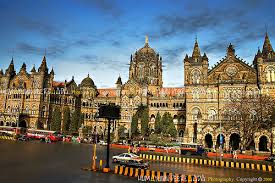Siddhivinayak Temple, Mumbai
History
It was Constructed on 19 November 1801, the first structure of the Siddhivinayak Temple was a little 3.6 m x 3.6 m square block structure with an arch formed block shikhara. The sanctuary was worked by the contractual worker Laxman Vithu Patil. The building was supported by a rich Agri lady named Deubai Patil. Childless, Deaubai manufactured the sanctuary so that the Lord ought to allow youngsters to other fruitless ladies. Ramakrishna Jambhekar Maharaj, a supporter of the Hindu holy person Akkalkot Swami Samarth, covered two awesome icons in the front of the managing god of the sanctuary on the requests on his master. As forecasted by Swami Samarth, following 21 years after the internment of the symbols, a mandar tree developed at that spot with a svayambhu Ganesha in its branches.
The 2550 sanctuary complex had two 3.6 m Deepamalas, a rest house and living quarters for the overseer. It had an abutting lake 30 x 40 sq. m. in size on the eastern and southern side of the sanctuary. The lake, dove by Nardulla in the mid nineteenth century to counter the shortage of water, was topped off in the later years and the land is currently not part of the sanctuary complex. Around 1952, a little Hanuman place of worship was inherent the sanctuary complex for the Hanuman symbol that was found amid the street expansion venture of Sayani Road close Elphinstone Road. In the 1950s and 60s, the distinction of the sanctuary spread and a critical number of enthusiasts started going to. Be that as it may, in similar period, the proprietor of the plot sold a portion of the sanctuary arrive, diminishing the perplexing territory. After 1975, the quantity of aficionados expanded significantly.
History
It was Constructed on 19 November 1801, the first structure of the Siddhivinayak Temple was a little 3.6 m x 3.6 m square block structure with an arch formed block shikhara. The sanctuary was worked by the contractual worker Laxman Vithu Patil. The building was supported by a rich Agri lady named Deubai Patil. Childless, Deaubai manufactured the sanctuary so that the Lord ought to allow youngsters to other fruitless ladies. Ramakrishna Jambhekar Maharaj, a supporter of the Hindu holy person Akkalkot Swami Samarth, covered two awesome icons in the front of the managing god of the sanctuary on the requests on his master. As forecasted by Swami Samarth, following 21 years after the internment of the symbols, a mandar tree developed at that spot with a svayambhu Ganesha in its branches.
The 2550 sanctuary complex had two 3.6 m Deepamalas, a rest house and living quarters for the overseer. It had an abutting lake 30 x 40 sq. m. in size on the eastern and southern side of the sanctuary. The lake, dove by Nardulla in the mid nineteenth century to counter the shortage of water, was topped off in the later years and the land is currently not part of the sanctuary complex. Around 1952, a little Hanuman place of worship was inherent the sanctuary complex for the Hanuman symbol that was found amid the street expansion venture of Sayani Road close Elphinstone Road. In the 1950s and 60s, the distinction of the sanctuary spread and a critical number of enthusiasts started going to. Be that as it may, in similar period, the proprietor of the plot sold a portion of the sanctuary arrive, diminishing the perplexing territory. After 1975, the quantity of aficionados expanded significantly.































